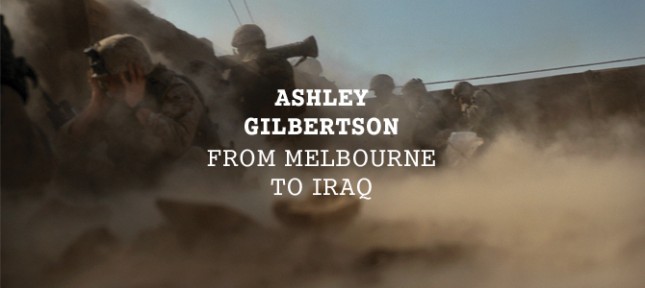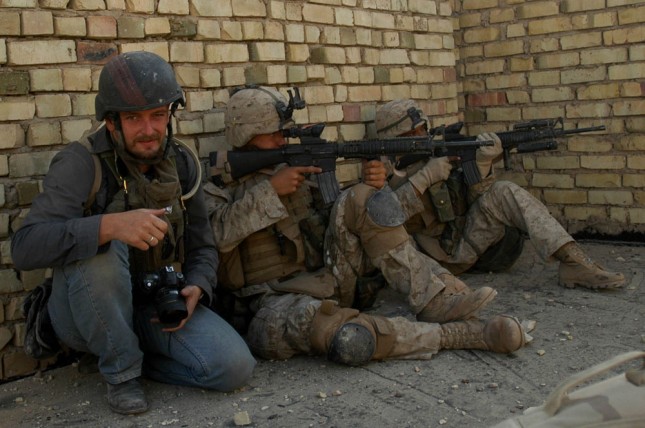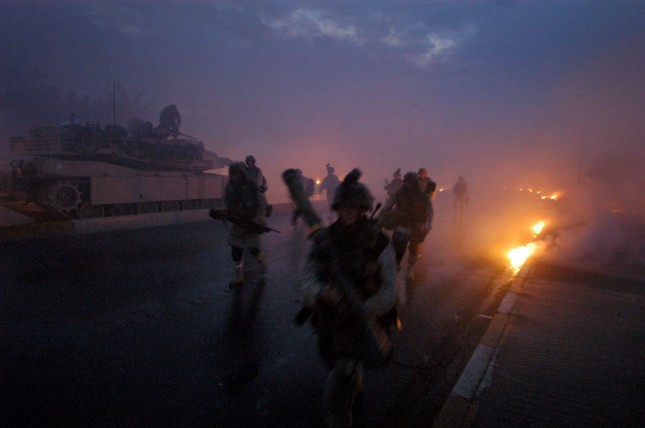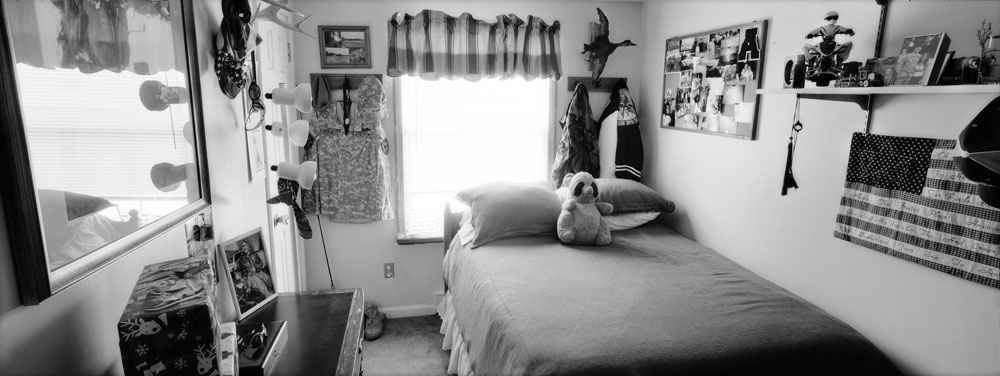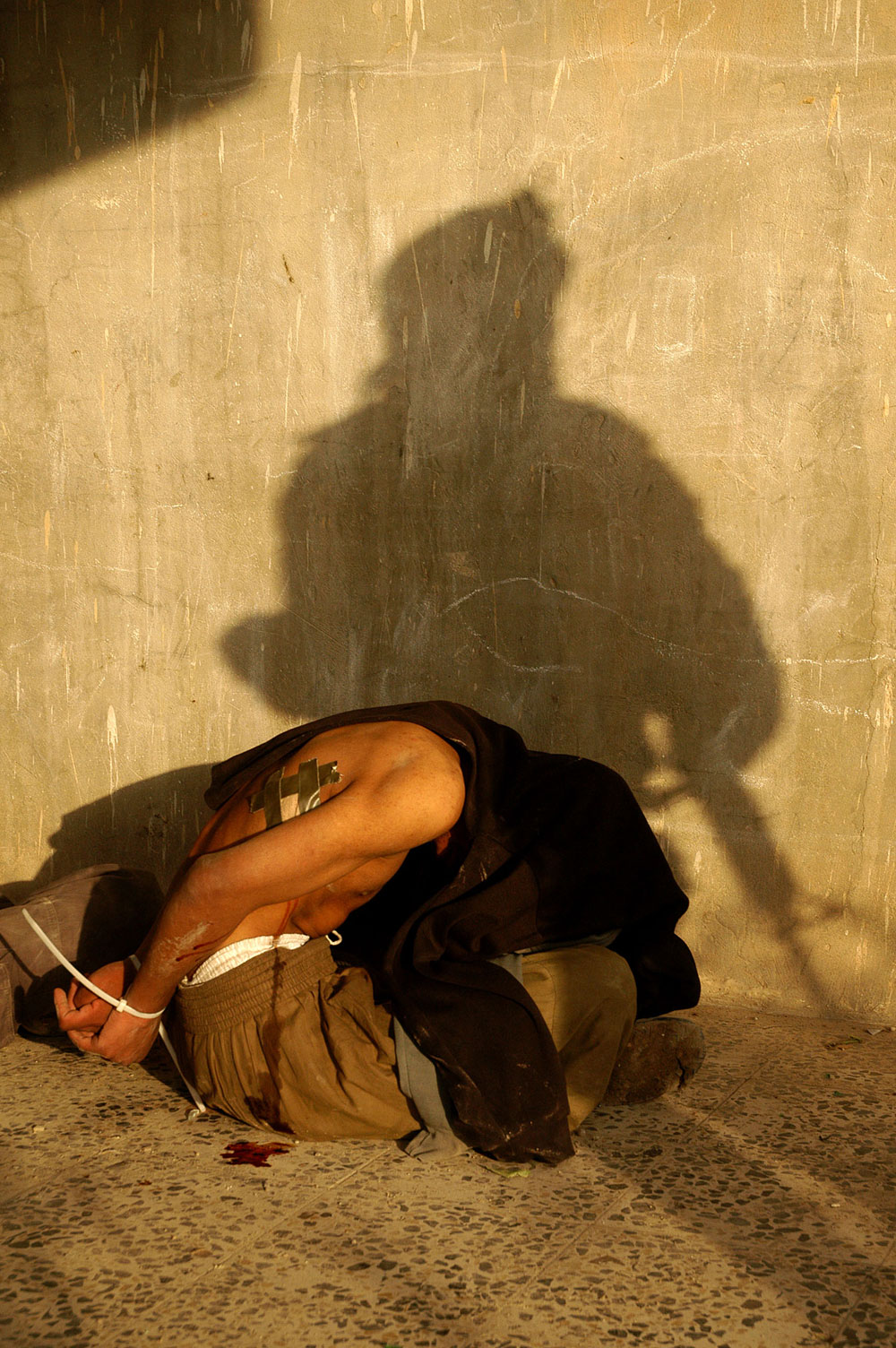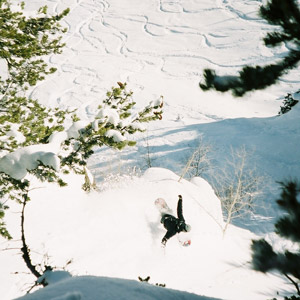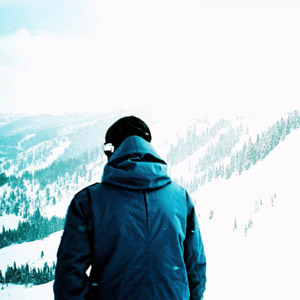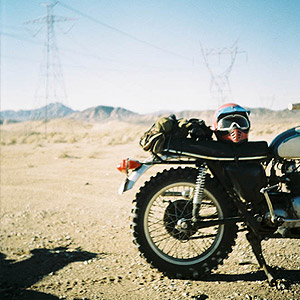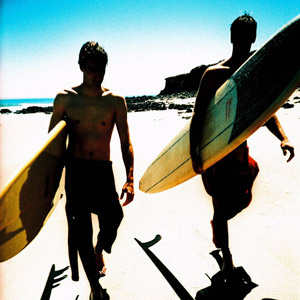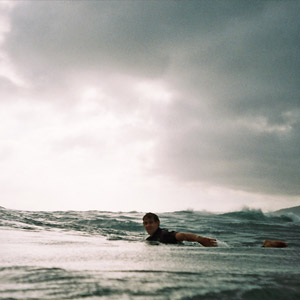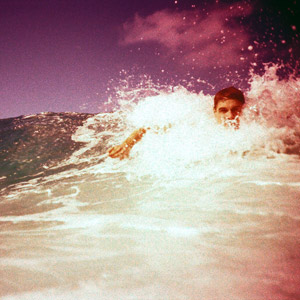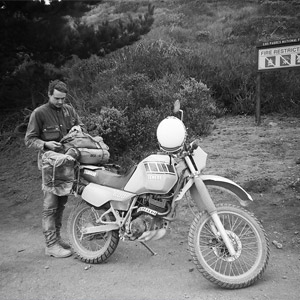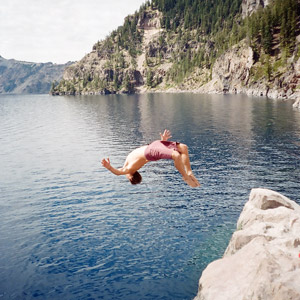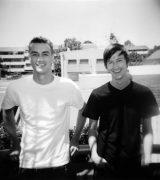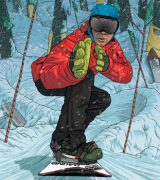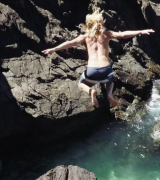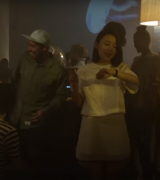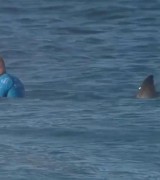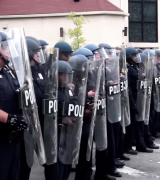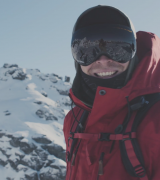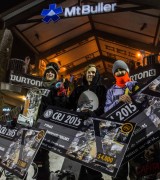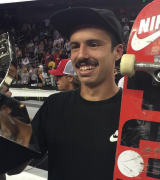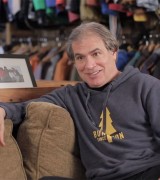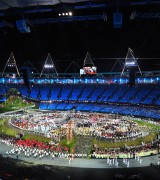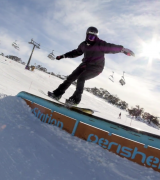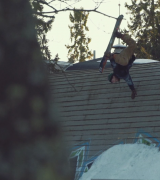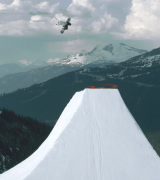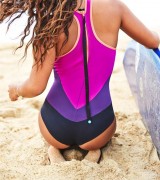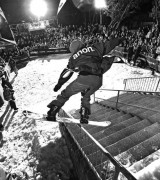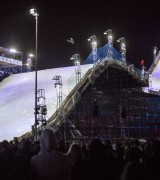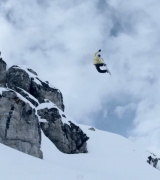(Marines from Bravo company, 1st Battalion, 8th Marine Regiment fire a rocket at a home they suspected insurgents were hiding in, deep within the neighborhood nicknamed “Queens” during the battle for Falluja, Iraq on November 13, 2004.)
Author: Ben Fulton-Gillon
All Photography: Ashley Gilbertson
A shorter version of this story first appeared in issue 17 of Pop Magazine – see it here.
I walked out of the office into the bright sunshine of Swanston Street, and found myself standing between a skater and his camera man. Getting out of the way and looking around I saw the skater perched on a concrete dome probably three meters off the ground waiting to get his drop documented. The guy with the camera introduced himself as “Cornwall” shooting some skate footage for a local mag. “It’s such a coincidence”, I said. “I have only just finished talking with Ashley Gilbertson.” “Who’s that?” Cornwall replied. I imagine most of you are thinking the same thing. You probably won’t wonder about or forget the name again.
“I wanted to have the best fucking skateboarding pictures that were out there.”
Ashley had a convincing confidence in his voice, as he explained his start in skate photography, at 15 years old. “I was doing a paper round and pumping gas at a service station, but I would send in, what I felt were my best photographs to the magazines, and it was a surprise every month when the magazine would come out, to see what I had in the magazine. Occasionally I would get really lucky and they’d give me a full-page fold out poster on the inside, and then occasionally I’d have a postage stamp somewhere.”
Growing up in Camberwell, with some of Melbourne’s best skaters at the time Ashley would often go skating at Camberwell College after school with his friends and when his father bought him a camera in 1991, started shoot them skating. “Michael Denovan was the best skater I hung around with. And an old friend. He was the first person I was publishing pictures of. I think the first photo I sold was of him at a Surf Dive ‘n Ski competition in Doncaster doing a 360 flip on a bank. I also hung out with Mike’s brother, Lloyd Denovan, with Ryan Nelson, Andrew Curtis, Sam Morgan, Darren Kirby, and so on.”
(As Marines push through the last part of southern Falluja they encounter enemy who fought in what is seen by commanders as their last stand. They are marines from the Bravo company, 1st Battalion, 8th Regiment 1st Marine Division fight to take control of the insurgent stronghold of Falluja. They have moved into an industrial area in the southern part of the city after fighting their way through the north where insurgents have been regrouping during the battle.)
One particular day in 1996, Ashley ran out of film and short on cash to buy some more went to sell his board at the Melbourne Surf Shop in Tivoli Arcade. “I went and sold my board, thinking I’d buy it back later; I didn’t. I never ended up buying anything back and photography just became far more important, and that created the transition from skate photography into photojournalism … I’d inadvertently made a decision I was no longer a skateboarder, I was a photographer.”
His work started to involve different subcultures of Melbourne, doing series on graffiti artists, and the urban environment explorers The Cave Clan, but when he met and befriended some of the refugees from Kosovo, brought to Australia in 1999, his viewfinder found an entirely new subject. Horrific stories of babies being cooked in kitchen ovens in front of their mothers made Ashley realise there were far more important stories in the world that needed to be brought to the attention of Australians. “The stories I heard from them are things that still come back to me today. It was very hard for me to believe and comprehend what those people were telling me.”
When the Australian government decided that Kosovo was stable, and returned the refugees, Ashley traveled with them. “I saw these people weren’t returning to a stable homeland. They were returning in the middle of winter, with Australian dollars that they couldn’t change because everything was in Deutsche Mark. I saw that we (Australia) did a really good thing in the beginning and then we fucked up really badly. We could have helped so much more dramatically, if only we had told their story, and been more empathetic with these people.”
Upon retuning from the trip, Ashly struggled to understand why people could continue to live so ignorantly of what was happening in Kosovo, and struggled to readjust into regular society. “When I got back from Kosovo, I was really angry. I was really angry going out in St.Kilda and seeing people going out and drinking, talking about the football, and talking about whatever the fuck they were talking about, and just not, paying attention to what was happening in Kosovo. I started trying to begin fights, and rather than drinking in a bar, I’d get a slab and drink with a stereo on the street, I was just trouble.”
“I mean for a 15 year old kid to have to worry about stepping on a land mine, rather than going out skating and pissing off security guards is bullshit. It’s totally unfair.”
Eventually Ashley met an immigrant from Kosovo who helped Ashley understand the beauty in our opportunity to enjoy a life without constant threats. “So that’s become one of the things I work towards. Giving people the opportunity to not to be concerned about their lives, not to be concerned about their ethnicity.”
Shortly afterwards, Ashley would get his first introduction to political conflict when he managed to obtain exclusive access to photograph the Free Papua Movement, Organisasi Papua Merdeka or OPM, a militant group working towards the independence of the western half of the New Guinea Island, or Irian-Jaya as the Indonesians refer to it. “I started researching this country and learning about the story that was taking place there, so I started finding out who from that country was living in Melbourne. It so just turned out that I met a man in Melbourne who was a commander of the group, who was a refugee in Australia.”
Through his contact, Ashley was invited to go in and be the first photojournalist allowed to meet with the group in 28 years.
Ashley somehow pulled it off, despite having to learn a few lessons on the way. “I went into west Papua, getting my ass thrown out by the Indonesians, because I was obviously a Journalist, then getting smuggled by the OPM back in across the boarder from PNG back into West Papua, and then entering Indonesia again, using my passport, being one step ahead of the authorities.
“We woke up one morning at 4:30, and we’d developed a contact with some guy that worked in a cargo plane flying chickens from Jayapura to the central highlands, and he agreed to smuggle us out of there before the authorities came in half an hour to arrest us.” The pictures ran in Time Magazine as a world exclusive.
“I don’t think I realised how dangerous it actually was. If we were caught in Indonesia by Indonesian soldiers illegally, I haven’t got a fucking clue what would have happened, except I imagine, there would have been a good chance that them, along with us, would have been buried somewhere in the jungle.”
It was only the beginning of Ashley’s experience of people putting their life on the line to have their story told.
In early 2003, tensions were rising in Iraq as George Bush initiated the invasion under the title “Operation Iraqi Freedom.” At the time, Ashley was already in Iraq. “I was out with the Kurdish, Militia the “Peshmerge”, and I was out on top of this mountain outpost, and they were fighting with Ansar al-Islam, which is what turned into Al Q’aeda in Iraq. Ansar would approach the mountain top sporadically, and attack the Kurds, and the Kurds would fight back, and afterwards everyone would go back to normal.
“I was up there one night with them, and we were sitting around and talking and all of a sudden our base was rocked by RPG’s and bullets were flying mortars are coming in, and these guys fucking ran out in the middle of the night, in pitch black, and started firing through these little holes in their fortified walls. It was such a fucking crazy experience. When the RPG’s started hitting the walls around us, I was like “Oh my God, what the fuck are we supposed to do now? This SUCKS” and these guys picked up their guns and ran straight out there and started firing to protect their homeland they call Kurdistan.”
This was the point at which Ashley made a major decision to focus his work on combat. “I wanted to understand what it was that drove men to not only pick up guns, and try to kill one another but also what that courage actually meant.” Ashley put him self on the front, standing amongst the soldiers directly confronting the insurgents. “I decided that I needed to understand who these men were that were trying to kill each other and why, and then express that photographically.”
George Bush gave his victory speech under the “Mission Accomplished” flag on May 1, 2003. It was the beginning of what would have Ashley spending more time in Iraq, than any other photojournalist, and most of the US forces over the next five years.
Whilst already having some impressive stories, he was still largely unknown as a photojournalist, his first big launch into mainstream photojournalism came in 2004, from a seemingly innocent photo of a US soldier in one of Saddam’s Palaces. He was in Saddam’s home town of Tikrit, the last major city in Iraq to fall, and quickly found the place to be swarmed with photographers.
“Everywhere I went there were soldiers kicking in doors and all this shit, and it’d be like 12 soldiers and 30 photographers chasing after them. So we went to one of the palaces, and just started looking around.” Ashley and his colleague Tim, met a couple of soldiers and started chatting with them, when one of them said “I’ve always wanted to do this” and slid down one of the bannisters of Saddam’s Palace. “..and I shot it. We all looked at it and were like ‘Ha-ha, that’s a great post card, ha-ha.”
He sent the photo through to his agency five days later with a few other photo’s he’d taken, not expecting anything major to come of them, and then a few days later a Time Magazine photographer congratulated Ashley on the photos in the latest edition.
His photo was printed as a double page spread, and immediately put Ashley on the map as a photojournalist.
“As far as the American press goes, that’s the picture that made my career. The photo was cited for Time Magazine, Photo of the Year, and a dozen other awards, and it really changed my career and my life.”
His work was recognised in 2004, when he won the 2004 Robert Capa Gold Medal Award for his reportage on “The Battle For Fallujah”, documenting what was described as some of the heaviest urban combat U.S. Marines have been involved in since the Battle of Hue City in Vietnam in 1968.
Whilst having been described as the “Psycho Australian” by other journalists, running right next to soldiers with insurgent bullets raining down around them, Ashly was no-longer winging it.
“I learnt that if you do get trapped in a mine field, then you walk close to trees, because you can’t plant mines where there are roots of trees.”
It’s something I’d heard Ashley mention in previous interviews. It was sound advice, Robert Capa, the famous war photographer that landed with the soldiers on D-day, whom Ashley’s most prestigious award was named after, died from stepping on a land mine.
“I started emerging myself very slowly into this field, and slowly, I became more comfortable in arguing, and learning how to argue before somebody picks up their gun and says, ‘Right, come with us.’ I started slowly because I thought there was a lot to learn before I was in a really really crazy situation.
(Marines run for cover after white phosphorus was accidentally fired at them by another company when Bravo Company, 1st Battalion, 8th Marine Regiment, was somehow mistaken for a band of insurgents in Falluja, Iraq on November 9, 2004. No one was hurt, but a 4000 degree briquette burnt right through Dexter Filkins’ backpack. It was horrible taking cover on the ground lying face up– face down meant I couldn’t dodge the pieces falling from the sky.)
He continued to work on the Iraq front lines embedded with US soldiers until 2008, where he experienced death and mourning on a near daily basis. He saw the worst of Iraq’s heaviest combat. US Soldiers he knew were not only dying, but being killed meters in front of him, he saw insurgent corpses being eaten by dogs, and innocent civilians becoming casualties of a war that was rapidly deteriorating. “I think that all of the training I had contributed to why I’m alive today. That, and maybe a shitload of luck.”
I asked Ashley about a photo that had caught my eye. As it turned out, it was a photo
taken in a situation where Ashley may have saved a soldiers life, rather than the much more often publicised stories when Ashley had been directly involved in the deaths of soldiers, assigned to protecting him.
“Yeah, I almost died taking that (photo). The Mahdi Army guys were dropping mortars on our position while we were up there, and I said to the soldier, the sniper that was up there with me, ‘Soooo, I just noticed that a mortar dropped in-front of us, and behind us, and I think the next one’s going to fall on top of us’..and he was like ‘Oh shit, I didn’t even notice that, I’m so sorry, let’s get the fuck out of here, like RUN’.. and we escaped and of course the next mortar fell right on top of us.”
When I asked if they were really dropping mortars in the middle of a city, he said, “The city was almost empty at that point, so the Mahdi army guys were just dropping mortars all over the place, and besides, if you were an insurgent force and you drop a mortar on top of a civilian by accident, you just walk over there and say it was the Americans, and everyone believes you.”
As it turned out, the Colonel that was in charge of the whole operation within the photo had recently written to Ashley saying, “That photo, defined the war in Iraq for me.”
In the background of the photo is the golden dome of the shrine of Imam-Ali, the third most important monument in Shiite Islam, and the whole point of the American occupation down there was to kill or capture all of the Mahdi Army fighters down there and not damage that shrine at all. Hence why the snipers were so important at this time.
Returning to the US with a suspected case of Post Traumatic Stress Disorder (or PTSD)
Ashley realised that like himself, people couldn’t return from being surrounded by death, loss and killing, to a normal life where people don’t wan’t to be apart of the experiences of the soldiers whilst at war. “People are continuing to delude themselves if you think you can send a young man off to war, and then and expect him to reintegrate into society after he’s killed people and lost friends.”
This brought Ashley’s lens to the bedrooms of soldiers that have died as a result of the war in Iraq that have been preserved by the soldiers parents in an exhibition called ‘Bedrooms of the Fallen’. The series shows the preserved family home bedrooms of young soldiers. The photo’s are haunting, in both their similarity and familiarness. They look like your bedroom, your siblings, or best friends. Ashley summed up the experience saying “I’ve never felt more like a war photographer, than when I’ve been in those rooms taking pictures.”
Ashley will continue the project, expanding the work to bedrooms of fallen soldiers from all over the world.
(Army Cpl. Brandon M. Craig, 25, was killed in an IED attack on July 19, 2007 in Husayniyah, Iraq. He was from Earleville, Maryland. His bedroom was photographed in February, 2010.)
“The goal is to have some Dutch bedrooms, some English bedrooms, French and Italian, and maybe some Australian, and then exhibit the work all over the world, and you’ll find they’re the same, they’ll have the same Eminem posters, the same hunting apparel in the corner, it will be the same thing. The teenage experience is a universal one.”
As a family man with a young daughter, he sighed when asked wether he will ever return
to Iraq, obviously a question he’d been asked too many times before, “I don’t know man. Now, no.” He paused before continuing. ”It will be a different soldier kicking in a door, it will be a different civilian looking scared, it’ll be a different child being shielded by a different parent, It’ll be a different village where all of this takes place, but to our audiences, to the public of Australia, to the public of the United States, to the public of France, it’s a guy wearing a man-dress, holding a kid who’s got dark skin, being confronted by a soldier wearing a uniform. It’s the same shit to them, and it’s our job to tell this story differently.
Whilst conveying his deep gratitude to the photographers and journalists still in Iraq documenting the war, he strongly believes the photos don’t have the same affect that they did in 2001 or 2003. I had to agree; like the song from Jack Johnston ‘A million people died on the news tonight, but not so many cried at the terrible sight.’ People in a comfortable lounge room forget only too easily about what they don’t have to deal with.
Life isn’t all doom and gloom for the now renowned photojournalist. One of his latest assignments was “A day in the West Wing” where Ashley was given complete access to the
white house to document a day in the life of the United States President, Barack Obama.
“The job I did with the president was amazing, it was just sooo interesting, I mean to have one day of unbelievable access like that, being in the oval office, with him (Obama), meeting with his advisors, was just amazing. And then I followed him around for two weeks, and I flew in Air Force One, and it was so cool. Like, it was so cool. “I was calling my wife, as we were taking off in Air Force One, and she was like ‘You’ve got to get off the phone!’ and I was like ‘No it’s all right, Everybody’s on a phone’.” “The experience was one of the most interesting things I’ve ever done in my entire life, and without a doubt one of the coolest.
I had to stop for a moment at this point, “Was this guy seriously kicking around on the streets on Melbourne only a decade ago?” There’s no chance anyone could have picked it, other than maybe Ashley himself, a perfect example of honestly putting your head and heart towards something and winding up, exactly where you want to. “To go out there and try to actually effect change, to really believe in what you’re doing, is to me, key. And it’s a very difficult process finding what that purpose is, what burns inside you that actually drives you to continue working. It’s purpose, and then passion towards that purpose.”
When asking what kit Ashley shoots with these days, I was naïve to think he was going to say “A Nikon D-Something.” “Now I’m shooting on two rolliflexes from the late 1940s the medium format 6×6 Leica film cameras and an old and old Nikon 5D, that I’m actually borrowing from a friend. And I’ve got a point and press. And I was shooting on an iPhone until I lost it.” He couldn’t have made it more clear. While it’s nice to have the right tools, at the end of the day, the message will be delivered through the content, not the quality.
I sat in my back yard up against a brick wall catching the last minutes of sunshine as another day ended and tried to imagine what it must have been like hiding behind it, deafening cracks of bullets digging through other side, my head down, no gun, trying to get a photo that puts everything into perspective. I wondered if the skate cameraman I’d met just after the interview in Melbourne was like Ashly had once been.
It’s taken me the best part of 3 weeks to get this piece together. Three weeks of reading and hearing the stories of Ashley and the situations he’s been apart of. Pictures of death and loss, blood and struggle.
Thinking back to Ashley’s words on how and why these people work, fight and sacrifice themselves for a future that they most likely wouldn’t get to live in. Just so their people too could go skating, and piss off security guards.
Did Ashley shoot the best skate photos ever? “I don’t think I ever achieved that, but I changed my goals before I got there.”
(Marines from Bravo company, 1st Battalion, 8th Marine Regiment detain an insurgent after they shot him and his two comrades in the neighborhood nicknamed “Queens” during the battle for Falluja, Iraq on November 13, 2004. The insurgent claimed to be a student. The marines responded, “Yeah, right, University of Jihad, motherfucker.”)
For more about Ashley Gilbertsons work, please visit: ashleygilbertson.com

